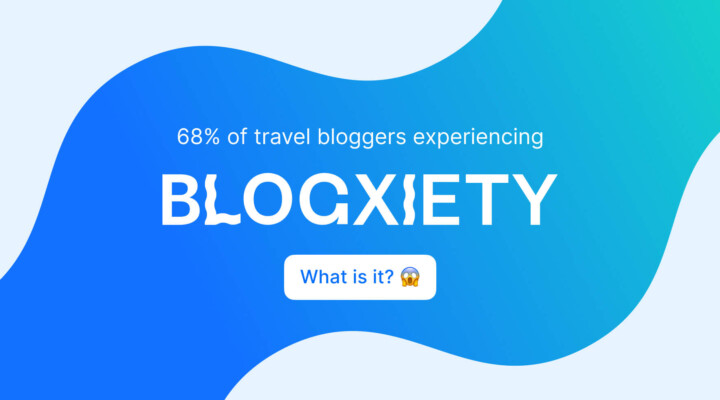Darley Newman has over a decade of experience of filming and producing content, having started from launching a show about horseback riding and going all the way to making a show about traveling with locals. This experience includes creating horse travel stories, writing for magazines, starting a website and publishing content online, working on the television, etc.
Some of the brands that Darley’s worked with over the years are AOL, Horizon Digital, PBS, Scripps, Amazon Prime, Ovation TV, Encore Starz, international networks, and more.
Growing Popularity of Video Content
Let’s have a look at some statistics on video consumption and advertising spend, and how it’s changing year over year. As you can see, people are expected to watch content on the internet a little longer in 2021 compared to 2019, so advertisers will be increasing their spending on online videos, while TV ads will lose some investment. So, it’s a great time to start or keep working with video content in the travel space.
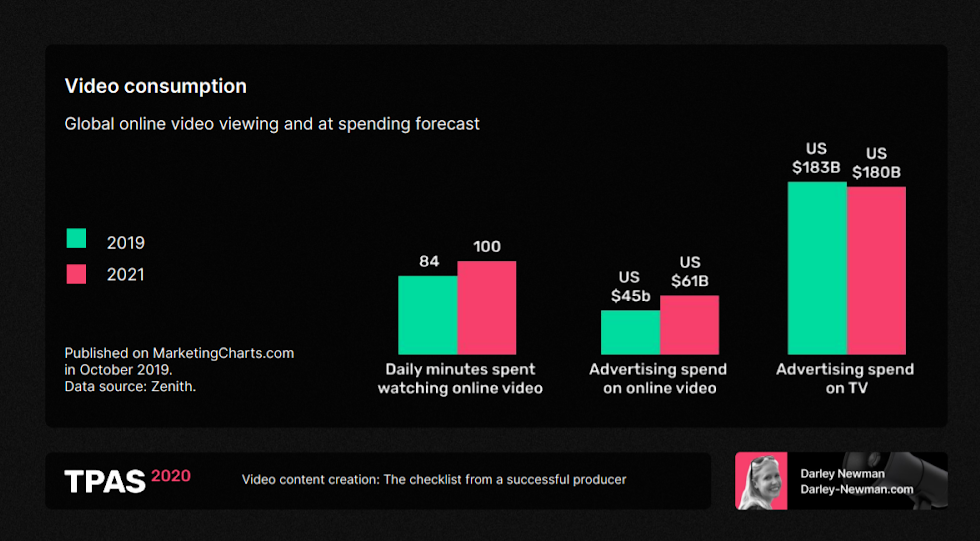
Getting Started
To succeed, you need to stand out from the competition and find your own space and audience. Here are some questions that Darley recommends [6:10] asking yourself: What am I uniquely positioned to produce? How to make a video that’ll be different and potentially better than one that exists? For instance, one of the reasons behind Darley’s success with horseback riding shows was its uniqueness in the market. So, be sure to run a competitive analysis and understand what’s there on the market.
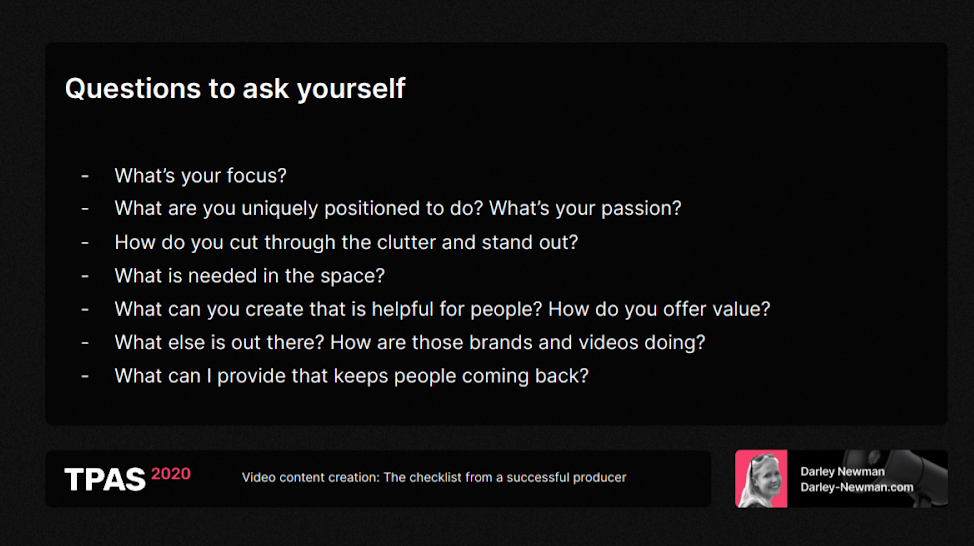
Don’t Be Afraid to Start
You just need to get started at some point. Many people feel potentially embarrassed at the beginning and don’t want to put themselves out there. But this can take a while. What you can do is record something with your phone and send it to friends to get their opinion instead of uploading it for public viewing right away. This can help you gain some confidence. Also, you can create videos without being on camera at first. However, if you want to brand yourself, it’s important to be in these videos.
Find Your Audience
Many vloggers find it terrifying having to look for one’s audience. Today, there are multiple platforms to start building your presence and reaching people, such as Facebook, YouTube, Instagram (IGTV, Reels, Stories), SnapChat, Vimeo, Brightcove, etc. It can also be your own website where you’ll be embedding videos.
While there are so many choices, it’s important to prioritize your time and energy investments. Take advantage of new platforms like TikTok or Instagram Reels as there’s growing demand and still some space left. It takes trial and error to find the right outlet, but what you can also do along the way is learn from big brands or bloggers and develop your strategy accordingly.
Captivate Attention
One of the important video production tips is to tell a story in every piece of content. Think about how you can give viewers a return on their time spent watching your video. It can be sharing educational information, providing emotional experience, and so on. If people feel that they’re taking away something from your video they’ll keep coming back. Also, try to give the audience a reason to watch it until the end. Telling them what they’ll be able to learn upfront in the video also plays well.
Diversify Video Content
Darley identifies four main types of videos that you should add to your YouTube content calendar:
- Educational
- How-to
- Humorous
- Stories
A winning strategy is to mix in how-to content with other video ideas. It’s also important to choose the right video length depending on the outlet you distribute on, for instance, average video on Twitter is 30 seconds, on Facebook the average is about a minute, it’s longer on YouTube. Darley recommends [14:20] aiming for five minutes, as shorter videos don’t always do well. She is also very positive about Facebook promotion, because the platform’s audience tends to be good at sharing content, especially in the travel niche.
Live Streaming and 360 Filming
There are two types of technology that deserve special attention: live streaming and 360 filming. Live streaming is a great way to create content. People like to rewatch it as well as share it. It’s imperative to ensure good broadcasting conditions (having reliable WiFi, good lighting, maybe a selfie stick), because there’s no do-over. To stream, you can use tools such as StreamYard, Facebook Live, Zoom, Periscope, etc.
360 cameras are another powerful tool to film action. It has high stabilization, which is especially important for filming virtual tours and leading people through spacing. And you can also deploy underwater housing if needed. However, be wary of older models because of potential stitching issues.
As for their benefits, 360 cameras help increase engagement. As you can see in the screen below, 360’ photos and videos tend to have higher return on investment (ROI) and click-through rates (CTR) than regular content.
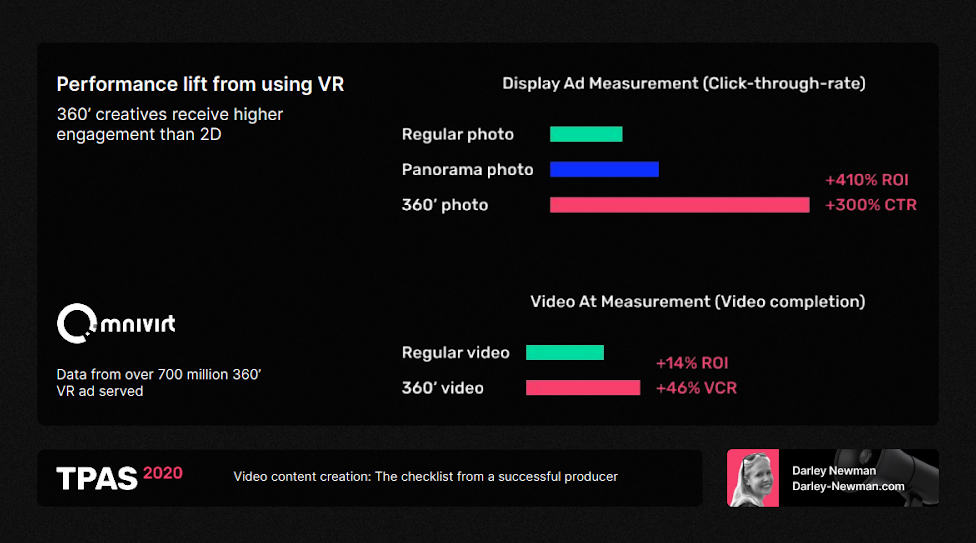
Use the Right Software
If you’re wondering how to plan a video shoot, take advantage of software Darley personally recommends [39:28]. Here are some of the best tools to look for:
- GoPro Max, Insta360 One R, and Insta360 One X
- Monopod or tripod
- Extra SD cards (SanDisk Extreme)
- Selfie stick
- DJI
- Osmo
You’ll probably need some additional stuff such as:
- Shotgun mic
- Wifi dongle
- Batteries and battery charger or power supply
- Sigma lenses, etc.
Editing plays an important part in video content creation. Here are some of the tools that Darley deploys to manage YouTube videos:
Monetize Your Videos
Here are a few ideas on how to create a marketing video and monetize your content:
- Advertising on YouTube. You need to build YouTube workflow up to a certain level to start monetizing it. Then, you can start showing ads and earn a cost per thousand or cost per view. To help people discover your videos, remember to pair them with relevant keywords.
- Amazon, Hulu, Netflix, Networks, OTTs. If you aim high, these platforms will get you huge distribution. What’s more, they are now accessible at such a reduced cost compared to a couple of years ago.
- Sponsors / integrations / product placement. Remember that it’s important to place a product in your video in an organic or classy way to have the best results. At first you might need to reach out to relevant brands yourself, make a few free videos like case studies, etc. to get your name out there. For instance, stream a wine tasting on Facebook or YouTube with a local wine brand and use those numbers to go to the next brand. Be sure to promote your content on all of your networks and tag friends and family to help monetization.
- Branded Series. This is normally a whole series of videos under one topic and in cooperation with one brand.
- Custom content
- Selling b-roll and photography. B-roll or B-reel is an alternative video recorded with the main shot. For instance, you might approach a property or destination you’re going to film at and offer them an exchange. It can be video, photos, etc.
- Affiliate marketing / links. There’re many ways to add links, for example, on your blog, in a video description on YouTube, etc. Note that direct cooperation with an advertiser is often higher-paid, so consider approaching brands directly.
- Merchandising and other offshots. You can do an entire YouTube channel just to sell the amazing T-shirts you’re creating, etc.
- Pay per view to consumers. For instance, Facebook allows for hosting a live stream and charging a ticket price.
- Subscriptions and crowdfunding (Patreon and Drip). Many bloggers start subscription-based things. Oftentimes, asking viewers to donate instead of charging a set fee brings higher returns. People tend to give more when they’re able to give freely.
- Venture capital
- Small business loan
- Bootstrapping. This is a strategy when you start to make money and you use it to fund the further growth of your business.
Get More Views
The next thing after creating videos is to get as many eyes on them as possible. Here are some of the ways that Darley shares in the video [26:26]:
- Networking for cross promotion. Link up with other influencers in your space, swap ideas, help build each other’s brands. Darley finds it one of the most fun parts of being a content creator and a great way to build your network.
- Partnering with a brand/media company. Many outlets are seeking new content, so don’t be afraid to reach out if you think your idea is a good fit for a particular brand. Darley shares that the best opportunities along her way always happened when she has taken the initiative and reached out.
- Traditional PR. While it’s not what people think about as much anymore, PR is still a great way to drive use for your content. For instance, HARO (Help A Reporter Out) is a free service that sends requests from journalists who seek expertise on various things. That’s a nice way to get quoted on media outlets.
Avoid Common Mistakes
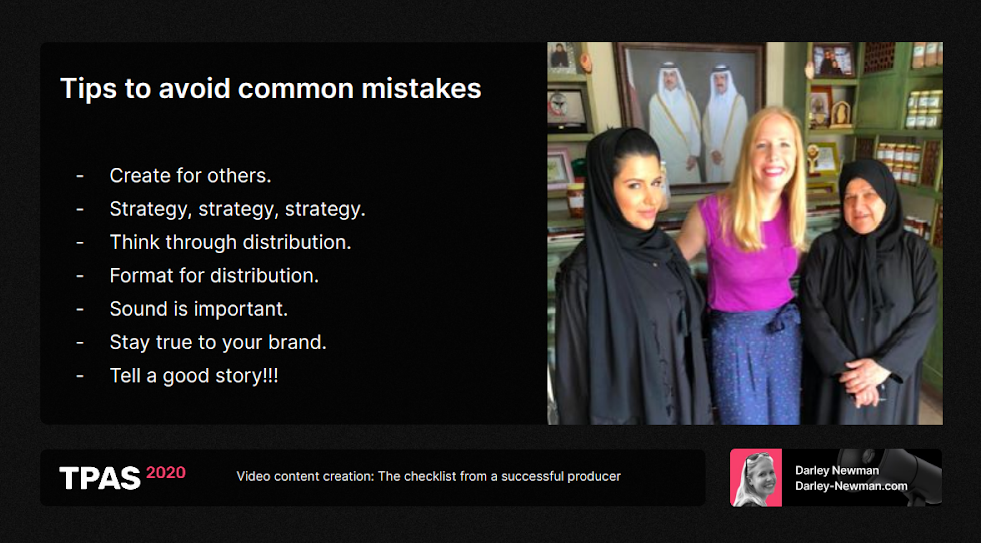
Here are a few tips on how to avoid common mistakes. First and foremost, create content for others. Be sure to bring value through your work, and it’ll keep people coming back. Good Youtube video ideas are always those based on personal experience, especially in a travel space. So if you have some first-hand expertise, that’s a huge value and people are looking for trusted sources. Another thing to think about is the technical side of your video content creation like sound, lighting, etc. which makes a huge difference for viewers.
Video Pre-production Checklist
These are the most important things to keep in mind while working. Be sure to prep people who’ll be on camera in your videos, but don’t overdo it. Also, ask someone to take “behind-the-scenes” pictures of you working, as such content tends to get a lot of traction. If you work with a particular brand, give them a shoutout—they might reshare your video. And, always back up your content!
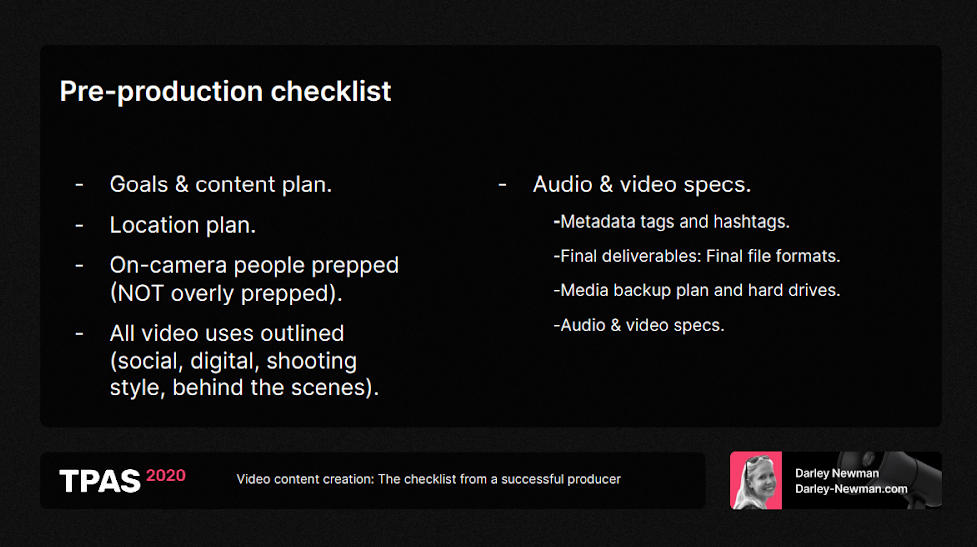
Learn From the Best
To give an example of successful content creators, Darley shares [15:27] a few names to check on Instagram for inspiration.
- @jenonajetplane. A former lawyer who’s now very successful on TikTok in the travel scene.
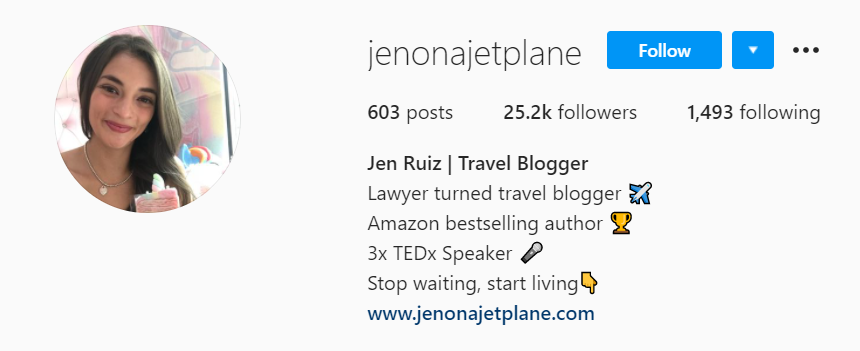
- @technickispeaking. Teaching video making and reviewing relevant tools and technology.
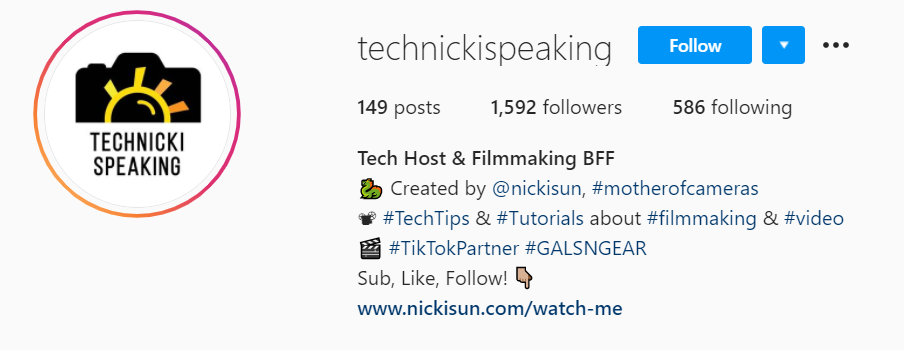
- @travelbabbo. A very experienced video maker to look up to.
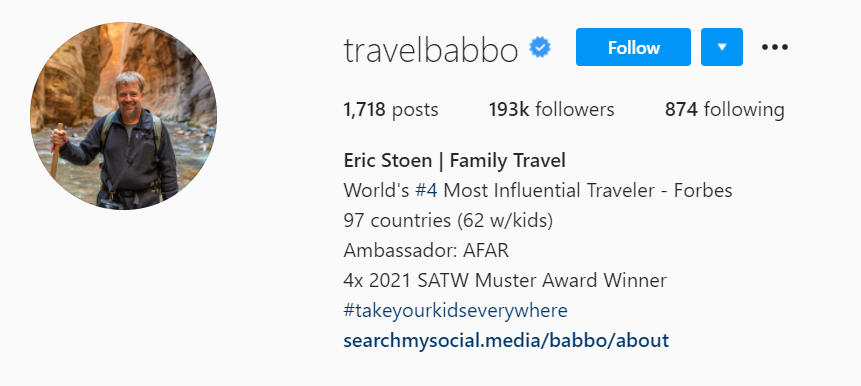
- @thepointsguy. Creating content on how to use hotel or airline points, an example of a unique and useful channel.
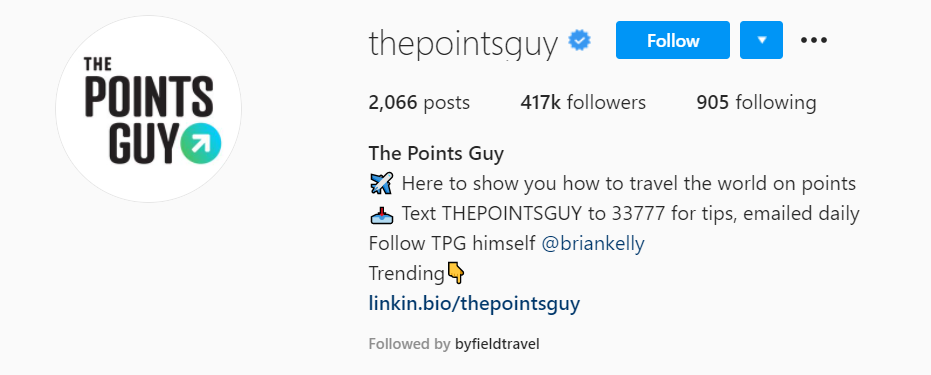
- @theplanetd. A great content creation couple to watch and learn from.
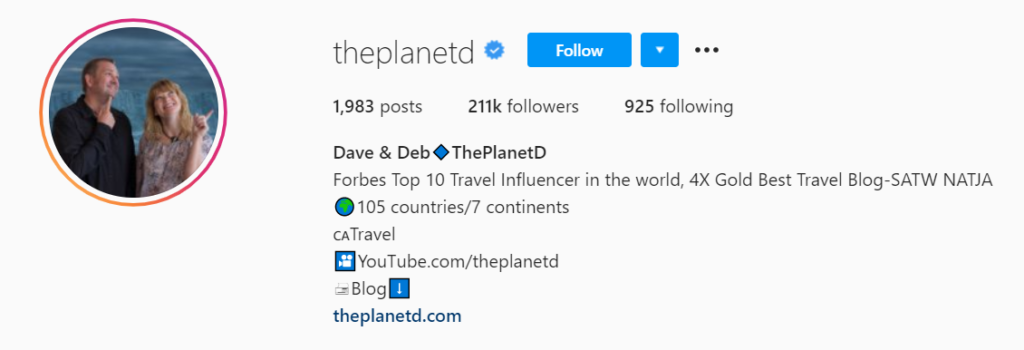
Wrapping Up
Success of video content creation depends on many factors such as advanced technology, the right promotion strategies, relevant topics, diverse content, extensive networking, and so on. But equally important is finding your unique voice and bringing value through all actions.
Try to learn something new about your niche every day and analyze both successes and failures on your way. Be persistent and don’t give up too soon, and if something doesn’t work, try to change it up. If you do what you believe in, you can really make a difference!
Presentation
You can download the presentation from the webinar at this link.

